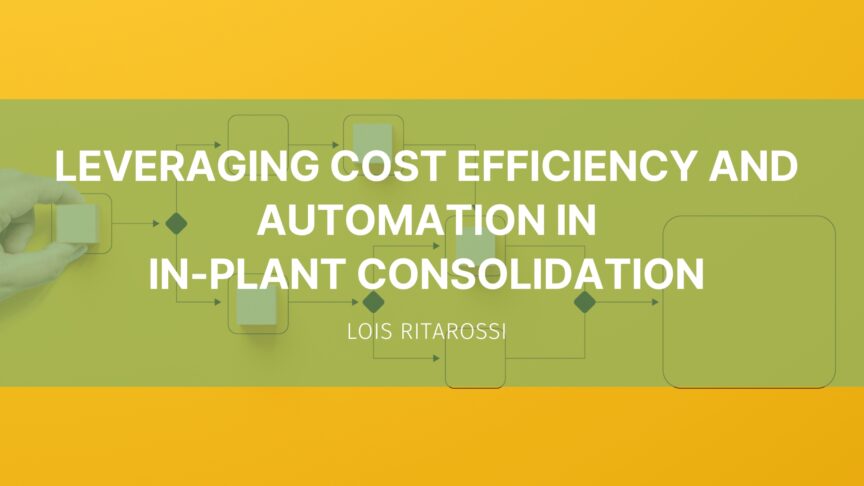Technology innovations are impacting every facet of the healthcare industry. That means in-plant operations must evolve to continue to provide value to their organizations. Recently, I spoke with Delvecchio Shankle, Director of Operations at Christus Health about their recent transformation and continuing inkjet journey.
Over a period of seven months, Shankle’s team has successfully consolidated from five in-plant operations down to two sites and moved one operation to a new facility. His print-mail operation serves the communication needs of 29,000 Christus employees providing healthcare across 600 patient care facilities in the US, as well as patient care facilities in Mexico, Columbia, and Chile.
Why Consolidate Print Operations?
The decision to consolidate operations was driven by the organizational desire to reduce costs, improve brand inconsistency, and provide scalability for new patient care locations. The evaluation across the five locations showed operational inefficiencies with redundant roles, manual processing, and inconsistent quality of output. The shops all used digital toner devices, following elimination offset printing in 2022. Shankle’s team completed the consolidation in March 2024.
The team had clear goals to streamline processes, reduce redundancy, and ensure standards for quality across all types of print and signage. Shankle also spoke of his strategy to demonstrate cost avoidance to the organization beyond cost savings. This approach enabled justification for investments in new equipment and workflow automation. The newly designed facility allows the operations team to leverage economies of scale, reduce overhead costs, and establish standards for each job type. The operation now collaborates with facilities management to produce and install all signage, including Braille encoding, at each facility with consistent branding.
Staff Alignment with Organizational Goals
The transition was challenging. Some staff were moved to roles outside of the operation, some retired, and some positions were eliminated. With the consolidation, the operations staff showed a heightened focus on efficiency and quality. This change empowered employees to see their work as important, and more directly contributing to the Christus mission.
Staff training on finishing and workflow is driving further efficiency and improving the quality of print materials. This training ensures that every team member can confidently manage their responsibilities, contribute to reducing costs, and maintain the high standards required for Christus’ print communications. Post consolidation, employees are reporting a renewed sense of purpose, as they can see the direct benefits of their contributions to both the organization and the customers they serve.
Automation Delivers ROI
Part of the workflow automation investments included OneVision Software and the Onyx RIP for wide format signage. The solutions were implemented with newly established standards for sign types. The standards required customer training to submit CSV files to automate proofing. The impact has been dramatic with a reduction of submission and approval times from average of seven days to four minutes. Customers are embracing the new process and are thrilled with eliminating rounds of proofing with shorter turnaround. This is an impressive ROI example which has demonstrated value and renewed commitment to the in-plant operation.
The operation now receives 90% of jobs submitted through a web-to-print (W2P) portal, the Market Direct Storefront (MDSF). While the operations team has mandated use of the W2P tool for job-submission, operators are happier knowing the team is leverage automation to deliver jobs done on time. The additional investments in BCC Software and PlanetPress provide integrity and automation in the workflow enabling insourcing of more print and mail jobs.
Inkjet is Coming
The final phase of the consolidation will be implementing new inkjet technology. After significant research over the last two years, Shankle plans to replace digital toner printers with a cutsheet B2 or B3 format inkjet press. He is at the analysis stage with several OEMs. He’s validating options to select the best inkjet solution for the mix of work. The requirements include both low area coverage for black and white jobs, as well as high-area coverage commercial print applications. Shankle knows the versatility of inkjet will enable his operation to insource work currently outsourced and provide more cost-effective solutions and offerings to his customers.
Evolving Business Needs
By consolidating the facilities and automating workflows, the team is positioned to meet evolving customer demands. Reorganizing the operation, embracing automation, and introducing new technology has enabled Shankle’s department to produce high-quality, customized materials at a lower cost. The benefits to Christus include impacting patient education and engagement, while contributing to improved patient experience as part of the healthcare delivery process.
Christus will have newly structured centralized facilities that leverage inkjet technology. The in-plant operation will have achieved the larger goals of cost efficiency, brand consistency and scalability. This success story showcases the strategic adaptations necessary to thrive in today’s in-plant industry.
You can also read how inkjet is transforming state in-plants in my recent article.

